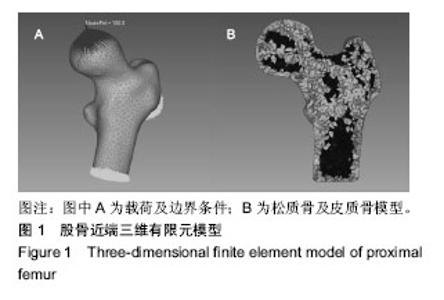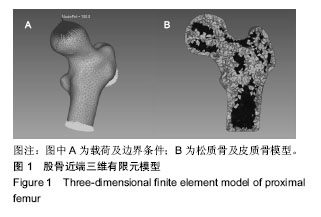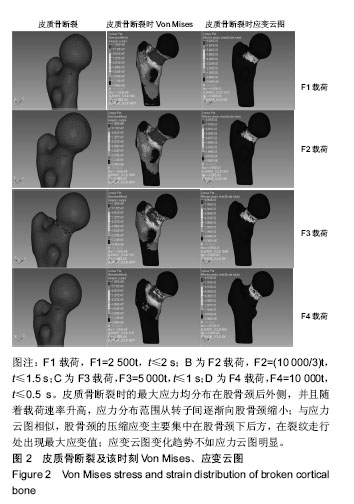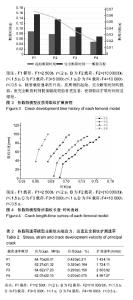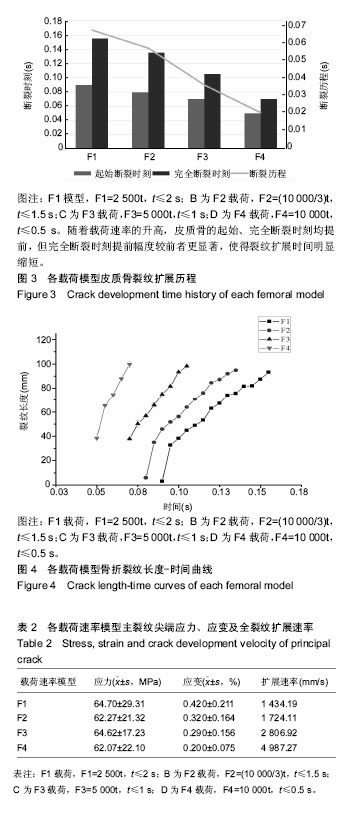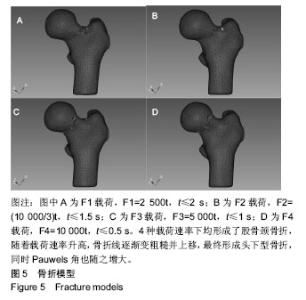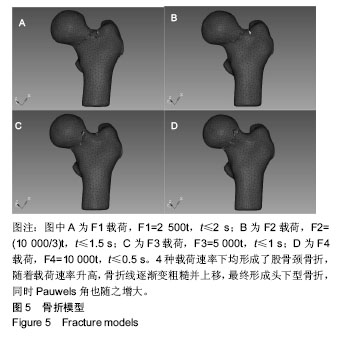| [1] Grisso JA,Kelsey JL,Strom BL,et al.Risk factors for falls as a cause of hip fracture in women. The Northeast Hip Fracture Study Group.N Engl J Med.1991;324(19):1326-1331.[2] de Bakker PM,Manske SL,Ebacher V,et al.During sideways falls proximal femur fractures initiate in the superolateral cortex: Evidence from high-speed video of simulated fractures. J Biomech. 2009;42(12):1917-1925.[3] Vale AC,Faustino J,Reis L,et al.Effect of the strain rate on the twisting of trabecular bone from women with hip fracture.J Biomech Eng.2013;135(12):121005.[4] 王清远,Pidaparti RM.骨疲劳损伤研究[J].力学进展,2002,32(2):285-292.[5] 林梓凌,李鹏飞,庞智晖,等.骨密度与老年髋部骨折股骨近端三维有限元模型密度的关系[J].中国老年学杂志,2015,35(11):3069-3070.[6] Zhong RY,Wu XP,Liao EY,et al.Relationship between age-related bone mass of the lumbar spine and skeletal size and their effects on the diagnosis of osteoporosis in women. Chin J Osteoporos. 2012;18(2):99-105.[7] Hayes WC,Piazza SJ,Zysset PK. Biomechanics of fracture risk prediction of the hip and spine by quantitative computed tomography.Radiol Clin North Am.1991;29(1):1-18.[8] 彭李华,陈世荣,唐进,等.骨质疏松股骨三维有限元模型的建立[J].中国组织工程研究与临床康复, 2010,14(9):1545-1548.[9] Morgan EF,Keaveny TM.Dependence of yield strain of human trabecular bone on anatomic site. J Biomech.2001;34(5):569-577.[10] Rieger R,Auregan JC,Hoc T. Micro-finite-element method to assess elastic properties of trabecular bone at micro- and macroscopic level.Morphologie.2018;102(336):12-20.[11] Haider IT,Speirs AD,Frei H.Effect of boundary conditions, impact loading and hydraulic stiffening on femoral fracture strength.J Biomech.2013;46(13):2115-2121.[12] 李平.不同跌倒姿势与髋部应力变化关系的有限元分析[D].广州:广州中医药大学,2014.[13] Faisal TR,Luo Y.Study of stress variations in single-stance and sideways fall using image-based finite element analysis. Biomed Mater Eng.2016;27(1):1-14.[14] Bahaloo H,Enns-Bray WS,Fleps I,et al.On the Failure Initiation in the Proximal Human Femur Under Simulated Sideways Fall.Ann Biomed Eng.2018;46(2):270-283.[15] 孙培栋.侧方跌倒高度及髋保护器对髋部冲击影响的实验及有限元分析[D].广州:南方医科大学,2012.[16] Ariza O,Gilchrist S,Widmer RP,et al.Comparison of explicit finite element and mechanical simulation of the proximal femur during dynamic drop-tower testing. J Biomech. 2015;48(2):224-232.[17] 李鹏飞,杜根发,林梓凌,等.基于LS-DYNA模拟老年股骨颈骨折的有限元分析[J].中国组织工程研究, 2016,22(44):6606-6611.[18] 郑利钦,林梓凌,何祥鑫,等.动态载荷下股骨转子间区域皮质骨厚度对骨折类型影响的有限元分析[J].医学研究生学报, 2018,31(10): 1043-1046.[19] Majumder S,Roychowdhury A,Pal S.Effects of trochanteric soft tissue thickness and hip impact velocity on hip fracture in sideways fall through 3D finite element simulations.J Biomech. 2008;41(13):2834-2842.[20] Nasiri M,Luo Y.Study of sex differences in the association between hip fracture risk and body parameters by DXA-based biomechanical modeling.Bone.2016;90:90-98.[21] Enns-Bray WS,Ferguson SJ,Helgason B.Strain rate dependency of bovine trabecular bone under impact loading at sideways fall velocity.J Biomech.2018;75:46-52.[22] 丁海,朱振安,薛晶,等.骨质疏松症对松质骨骨小梁应力与微损伤关系的影响[J].医用生物力学, 2015,30(1):68-73.[23] Sanborn B,Gunnarsson CA,Foster M,et al.Quantitative Visualization of Human Cortical Bone Mechanical Response: Studies on the Anisotropic Compressive Response and Fracture Behavior as a Function of Loading Rate. Exp Mech.2016; 56(1SI): 81-95.[24] Evans AG.Perspective on the development of high-toughness ceramics.J Am Ceram Soc. 1990;73(2):187-206.[25] Kulin RM,Jiang F,Vecchio KS.Loading rate effects on the R-curve behavior of cortical bone.Acta Biomaterialia.2011;7(2):724-732.[26] 黄志刚,孙洪祥,黎然.基于GMTS准则的岩石复合型断裂机理研究[J].力学季刊,2018,39(3):1-7.[27] 李柯萱,李铁.不同加载速率下砂岩弯曲破坏的细观机理[EB/OL].爆炸与冲击,2018-05-25[2018-09-30]. http://kns.cnki.net/kcms/detail/51.1148.O3.20180929.1616.028.html[28] Marco M,Giner E,Larraínzar-Garijo R,et al.Numerical Modelling of Femur Fracture and Experimental Validation Using Bone Simulant. Ann Biomed Eng.2017;45(10):2395-2408.[29] Khor F,Watson B,Gierczycka D,et al. Effect of cortical bone material asymmetry using a three‐point bend test simulation. International Research Council on Biomechanics of Injury (IRCOBI),2016:18-19. |
